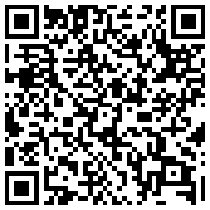
Categories
Money money money...
Could we help you? Please click the banners. We are young and desperately need the money



Last updated: March 6th 2025
Categories: Common Web Development, Databases, IT Development, Php
Author: Tim Fürer
PHP: Sanitizing User Input



Website security is a major concern for web developers, especially when dealing with user input. Sanitizing user inputs is an effective way to improve your website's security by ensuring that harmful or malicious data cannot compromise your site. In this article, we'll define what sanitation is, discuss the importance of server-side sanitation, and show you how to implement it using PHP. We'll also cover common web attacks like SQL injection and cross-site scripting (XSS) to help developers understand the threats they're defending against.
What Is Sanitation
Sanitation is the process of cleaning and validating user input to ensure that it is safe for processing and displaying by your web application. It helps protect your website and its users from potential threats by removing or neutralizing harmful content such as malicious code or unintended characters. By sanitizing user input, you can prevent common web attacks like SQL injection and cross-site scripting (XSS), which aim to exploit vulnerabilities in your application using unsanitized input.
Why Do Sanitation on the Server-Side
Sanitation has to be done on the server-side because client-side sanitation, which is performed using HTML and JavaScript, can be easily bypassed or manipulated by an attacker. Since the client-side code runs on the user's browser, it can be modified, disabled, or completely circumvented, leaving your web application vulnerable to attacks. By implementing server-side sanitation, you ensure that user input is always validated and cleaned, regardless of the client-side conditions, providing a more secure and reliable defense against threats.
Understanding SQL Injection and Cross-Site Scripting
- SQL injection is a type of attack where an attacker inserts malicious SQL code into user input fields, specifically targeting areas where user input is used to build database queries. Examples of vulnerable input fields include search forms, login forms, and comment sections. By injecting malicious SQL code, the attacker can manipulate your database, leading to unauthorized access, data theft, or even complete control over your web application. Sanitizing user input on the server-side can help prevent SQL injection attacks by ensuring that any malicious code is removed or neutralized before it reaches your database.
- Cross-site scripting (XSS) is a type of attack where an attacker injects malicious JavaScript code into your web application through user input fields that are later rendered as HTML on the website. Examples of vulnerable input fields include comment sections, user profiles, and form fields where user-generated content is displayed. This can allow the attacker to steal sensitive information, manipulate your website's content, or even take control of your users' browsers. Server-side sanitation can help prevent XSS attacks by removing or neutralizing any malicious JavaScript code before it can be executed by the browser.
Implementing Server-Side Sanitation with PHP
In PHP, there are several built-in functions that can help you sanitize user input effectively. Here are some common techniques:
Sanitizing strings
Use filter_var() with the FILTER_SANITIZE_STRING flag to remove any HTML and JavaScript tags from a string.
$clean_string = filter_var($input_string, FILTER_SANITIZE_STRING);Sanitizing integers
Use filter_var() with the FILTER_SANITIZE_NUMBER_INT flag to remove any non-integer characters from a string.
$clean_integer = filter_var($input_string, FILTER_SANITIZE_NUMBER_INT);Sanitizing email addresses
Use filter_var() with the FILTER_SANITIZE_EMAIL flag to remove any illegal characters from an email address.
$clean_email = filter_var($input_email, FILTER_SANITIZE_EMAIL);Sanitizing URLs
Use filter_var() with the FILTER_SANITIZE_URL flag to remove any illegal characters from a URL.
$clean_url = filter_var($input_url, FILTER_SANITIZE_URL);Conclusion
Sanitizing user input is a crucial aspect of web development that helps protect your website and its users from security threats. By implementing sanitation using PHP's built-in functions, you can effectively prevent harmful data from entering your web application. As a developer, it's essential to apply sanitation techniques to all user input and stay vigilant about your website's security.
Remember, sanitation is just one aspect of website security. Keep exploring and learning to ensure that your website remains safe and secure at all times.
